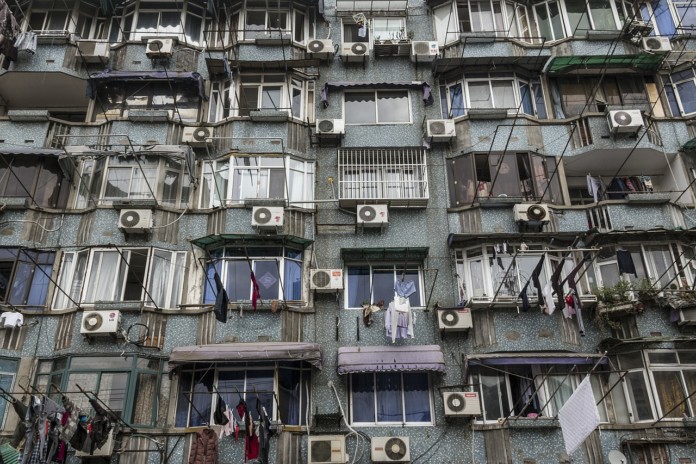Commercial buildings and businesses need to maintain a pleasant and fresh environment in their spaces. In commercial buildings, employees and customers require a comfortable atmosphere to conduct business. To do so, proper heating and air conditioning are a must. And this requires an enormous amount of energy and functionality. To solve this enigma, a commercial HVAC system comes into play.
A Commercial HVAC System
HVAC (Heating, Ventilation, and Air Conditioning) system has become essential for modern structures. HVAC systems are responsible for maintaining a pleasant temperature, a constant humidity level, and a high level of indoor air quality.
Commercial HVAC systems are similar to housing HVAC systems. But they have more capacity and complex functionality. Installing them also requires an expert commercial HVAC service company.
Considering their businesses depend on it, commercial buildings require an effective way to deliver year-round relaxation at a lesser cost. There are three main components of a commercial HVAC system.
Heating System
Unlike air conditioning or cooling systems, heating systems work by transferring hot air via radiator coils or pipes that keep the area warm.
Ventilation System
Ventilation systems employ filtration and fan to circulate air across a whole structure, keeping the air fresh and breathable.
Air Conditioning System
Air conditioners employ cryogenic or liquid systems to remove extra moisture in the air and keep the place cool. Commercial HVAC systems are often constructed with larger BTUs, which can lower the temperature more effectively than residential units.
How A Commercial HVAC System Works
HVAC systems control a room’s air quality and weather with three main components. Which are: warm and cool air, distribution of air, and control.
Warm And Cool Air
When the warming in the commercial HVAC system is on, the burner produces combustible gases. This gas is transported to a heat exchanger. Then heat exchanger heats the air passing through. Often, heat pumps are used to bring outside heat into. Air conditioners operate similarly to the process of heat pumps. But in reverse. It transports heat from inside to outside.
Hot water is transported by pipes put in the ceilings, floors, and walls of some commercial buildings that employ a boiler system to heat water. You may not realize that the building is heating, but you will sense that the air is warming.
Distribution
For distribution and ventilation, mechanical equipment is placed. Mechanical systems supply or ventilate according to the need. They ventilate when the place needs to be cooled. At the same time, they supply hot air when the place needs to be kept warm. In the same manner, they also control the humidity of the air.
Control Systems
To regulate everything, commercial buildings can use easy-to-use programmable thermostats. Programmable thermostats send different cooling or heating queues during the day, similar to how residential standard house HVAC work.
Besides, commercial HVAC systems could employ more complex direct digital controls (DDC). More developed control systems improve energy quality and effectiveness. A central computer uses sensors to oversee and optimize temp routines and lighting processes.
3 Most Common And Reliable Commercial HVAC Systems
There are a lot of commercial HVAC systems in the market. They have different pricing, characteristics, and edges. But all of them are not efficient and reliable. However, we included the three most common and reliable systems.
Single Split System
A single split system is the most cost-effective HVAC system out there. It is ideal for small commercial buildings. Individual rooms can be heated and cooled with this. Therefore, making this system ideal for shops, small offices, server rooms, and cafes.
You can also combine them to function in huge areas or multiple spaces. The only drawback is that there must be sufficient outer area to implement an outdoor unit for each unit.
Among the benefits of this system are:
It’s much less pricey than putting in a centralized system.
Each system is self-contained. If one fails, it does not affect the others.
You could indeed implement cooling capacity in kind of a one-to-one ratio as your company grows.
Although it is incredibly adaptable, efficient, and energy-saver, this system is less costly.
Multi-Mini Split System
Multi-mini split systems are similar to single split systems. However, these commercial HVAC systems are more power-saving and have a lesser exterior appearance. You may link up to nine indoor places to one outer unit with a multi-split system. Moreover, heat sensors are also included in the system. They monitor heat changes and modify the environment as needed. All of these are done using significantly less power.
In addition, the heat pump in this system is intended to circulate air to complete the normal flow of warmed air into chilly regions/ That converts to saved money and energy. The drawback of these commercial HVAC systems is that they take longer to set up.
VRF System
Single- and multi-split HVAC systems are both cost-effective. However, they can not operate well enough in huge commercial areas. VRF systems are simple to set up, operate, and maintain. Large structures with open floor designs benefit from VRF systems. Because they can heat or cool enormous regions. Since they can heat and cool distinct regions simultaneously, these systems are ideal for building with small zones.
VRF systems are more expensive upfront than split systems. Moreover, they must be installed by HVAC professionals familiar with the system’s complexity. At the same time, VRF systems save money on regular energy bills in the long term.




